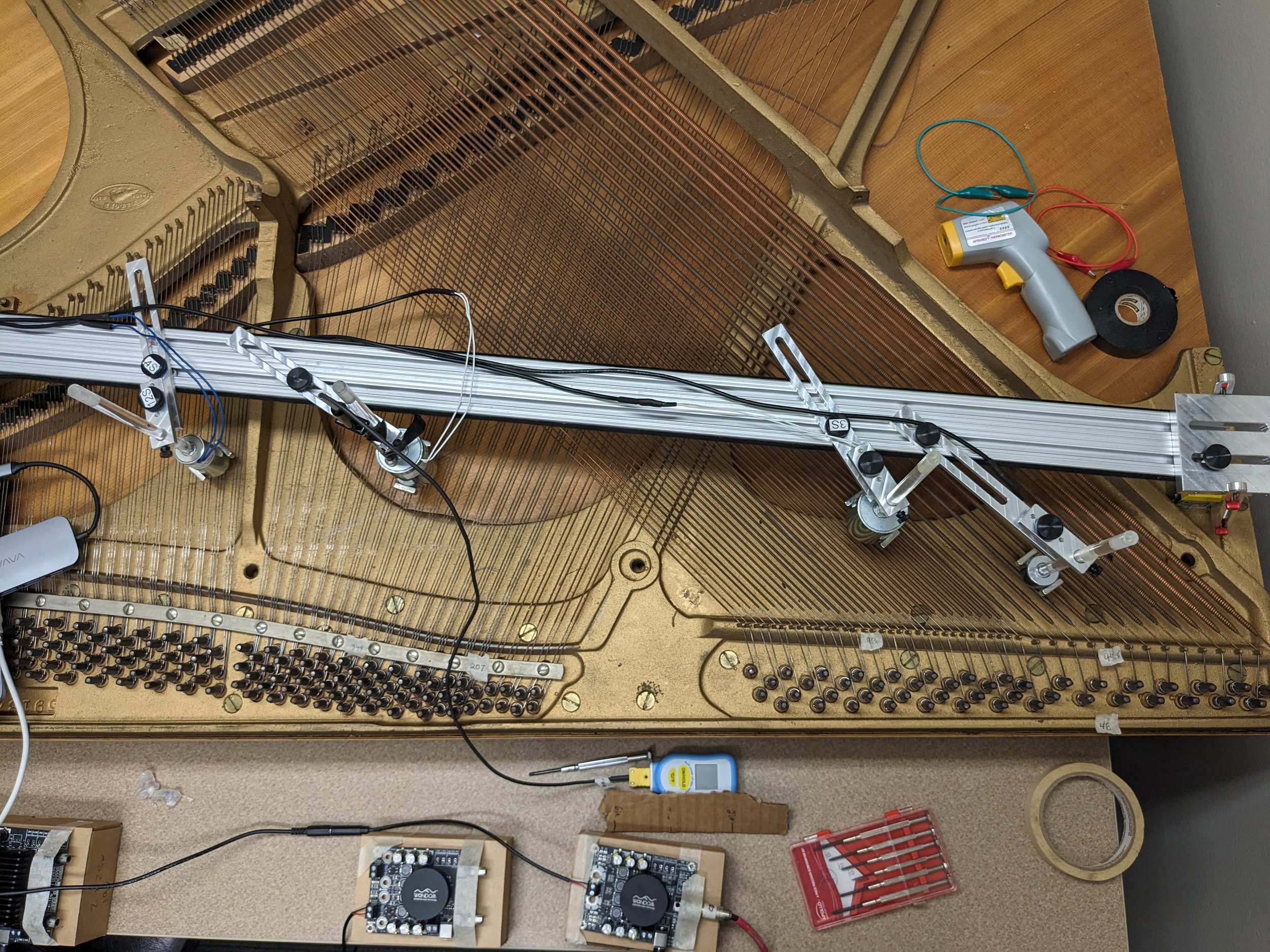
ARTIMIS Project:
An advanced research team funded by Miami University and focused on the design of new musical instrument technology. The team’s first project, the Ghost Piano, involves expanding the capabilities of the ElectroMagnetically-Prepared Piano system by redesigning it for greater portability, and introducing haptic feedback mechanisms partially controlled by artificial intelligence.
Part 1: The Ghost Piano
The Ghost Piano is the first instrument under development as part of the ARTIMIS Project. This is an expansion of the existing ElectroMagnetically-Prepared Piano. The original system was designed to install on a grand piano and be controlled by a computer. The Ghost Piano will involve the following changes to the system:
a new, more portable frame for the electromagnetically-controlled strings, removing the requirement for a grand piano,
new methods of human/instrument interaction by introducing additional mechanisms of string activation and dampening,
the ability to inject operational uncertainty into a given performance through the use of artificial intelligence - allowing the system will interact with the performer, either reinforcing or pushing back against their musical intentions,
the inclusion of a TENS (Transcutaneous Electrical Nerve Stimulation) unit, which allows us to run a current directly through the piano strings. This gentle current will provide haptic feedback to the performer as they touch the strings.
The electromagnet system set up on the harp of an upright piano. Visible are 4 different sizes of electromagnets, each placed over a different string configuration.
In our initial testing of the system on the piano harp, we quickly realized that the existing electromagnet/ amplifier combination was not providing enough power to sufficiently activate the strings. We further realized that the process of increasing that power was incredibly complex. We thus decided to test a variety of different configurations to optimize performance. The variable involved included:
electromagnet size, shape, and resistance
amplifier wattage
the use of permanent magnets of various strengths, and in various configurations
string type: wound vs. unwound, tension, density, and coupling (1, 2, or 3 strings per pitch)
The graph below shows the results. Each triangle represents an average dB level for a particular string, using a particular size of electromagnet/amp. The lines show result curves.
Findings: the largest sized electromagnets provide the greatest volume from D#2 down, the smallest electromagnets are loudest above D#2. The medium size is never the loudest.



